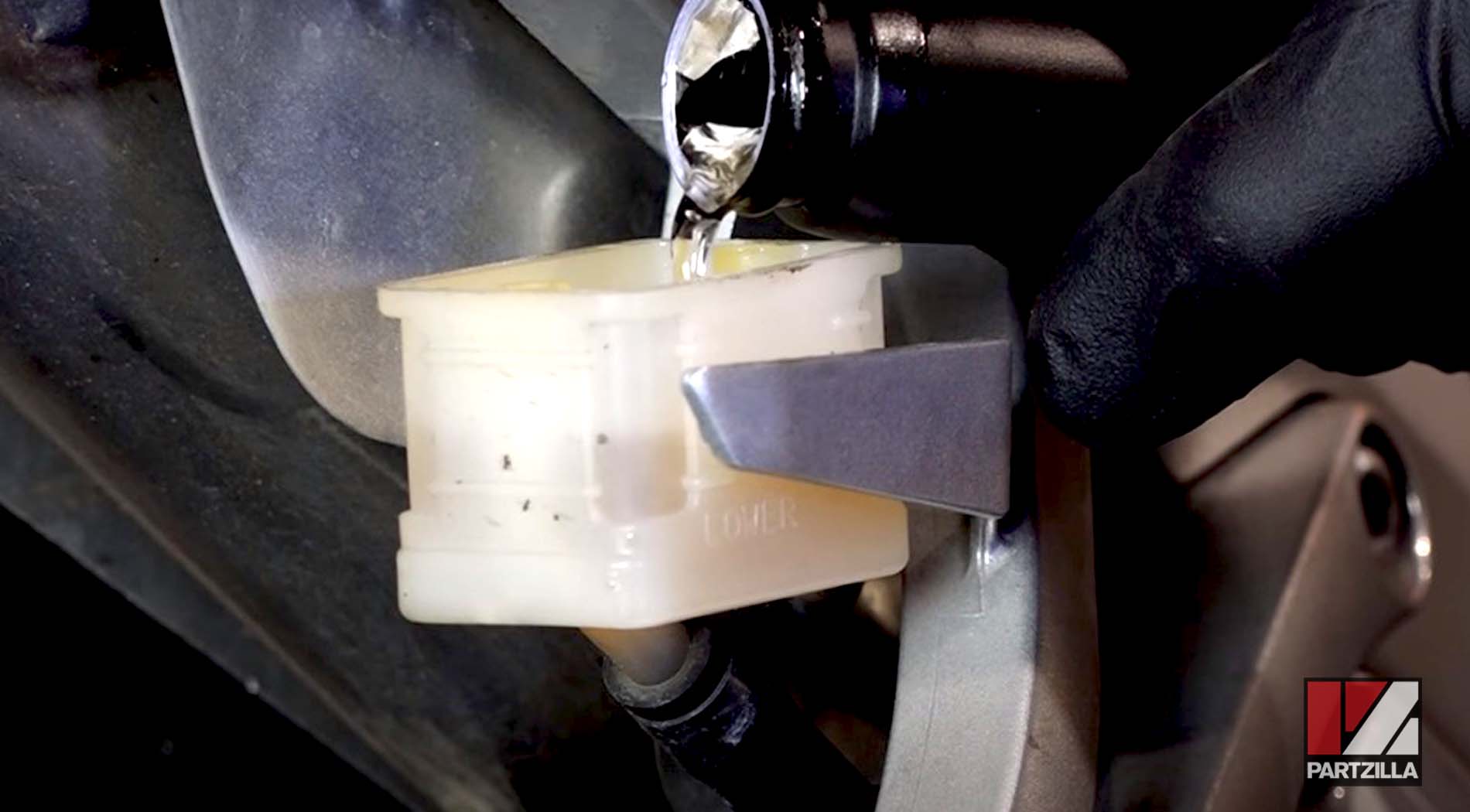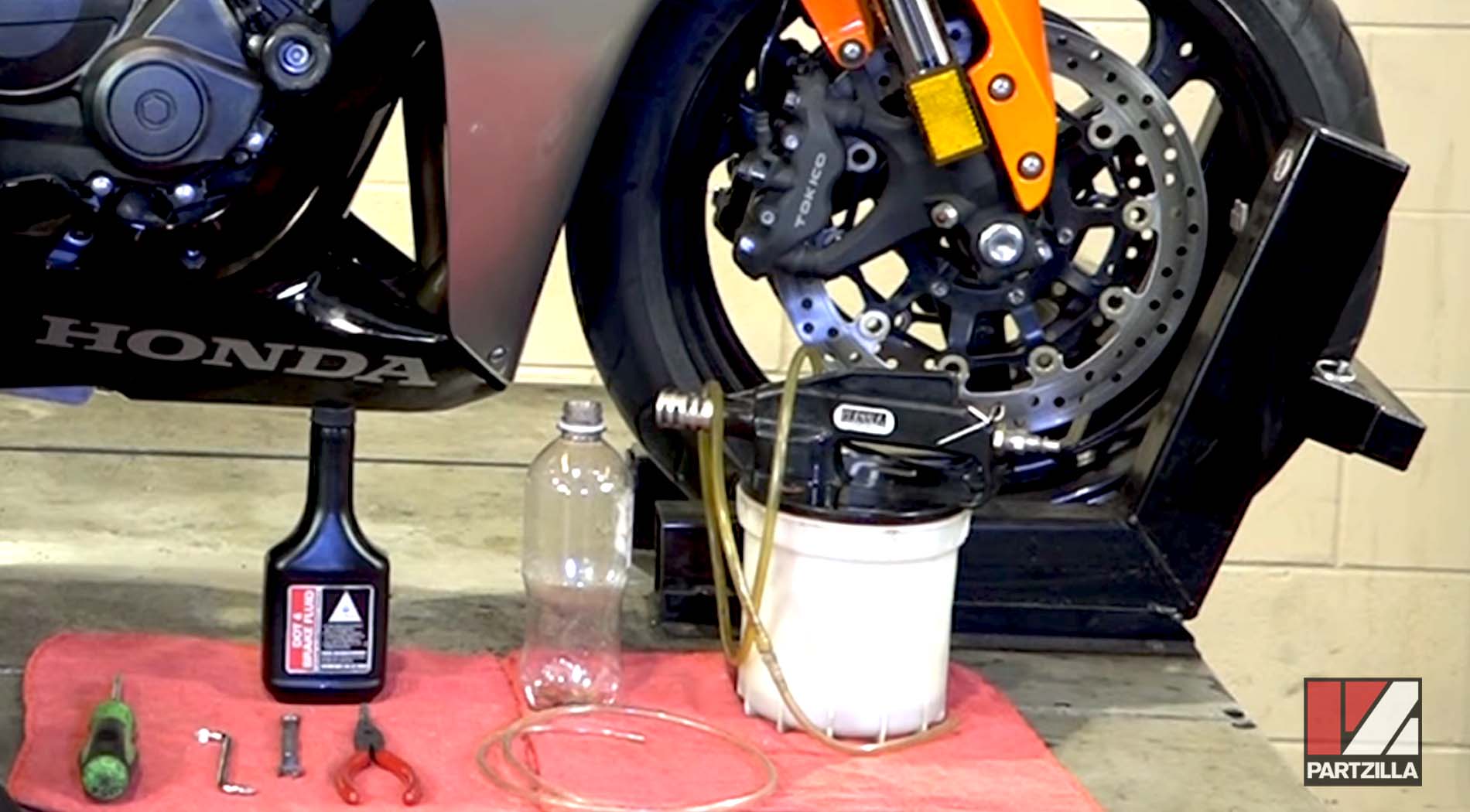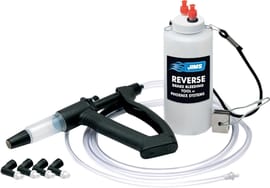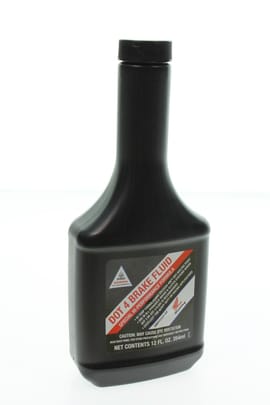Quick Maintenance: Bleeding Motorcycle Brakes
Bleeding a motorcycle’s brakes is one of those easy maintenance jobs you really shouldn’t put off. It takes very little time to get it done, and you’ll be doing your bike’s brakes and yourself a huge favor.

Why Bleed Motorcycle Brakes
Bleeding your motorcycle’s brakes ensures there are no contaminants in the brake fluid, allowing the pressure within the braking system to be at its peak when you apply the brakes.

Air, dirt or water mixed in with the brake fluid reduce the effectiveness of the brakes, and damage various parts within the system. By bleeding the brakes, you remove those contaminants, plus get an insight into the overall health of the braking system and whether certain parts need replacing.
What to Look For When Bleeding Motorcycle Brakes
You should bleed your motorcycle's brakes at least once a year at a minimum.

Here’s what to check for when you bleed the brakes on your motorcycle:
Air Intrusion
Hydraulic brake systems operate by pressure, and even the smallest amount of air reduces the system’s ability to generate pressure and perform at its peak. Check for little bubbles in the brake fluid while you bleed it.
Water Intrusion
Brake fluid is hygroscopic, meaning it attracts water molecules. Water in the brake fluid corrodes metal parts, and damages plastic/rubber seals. It’s difficult to detect water in brake fluid, but a deep yellow discoloration indicates the fluid is old and probably has water in it.
Dirt Intrusion
Tiny dirt particles suspended in the brake fluid act as abrasives within master cylinders and brake calipers, where they damage plastic/rubber seals. Dirt in brake fluid can be detected by a dark discoloration and damaged seals.
Watch the video above to see how to bleed the brakes of a Honda motorcycle.
Finding air or dirt in the old brake fluid is a good indication that the master cylinder seals or brake piston seals are leaking and need to be replaced.
- Brake fluid is very harmful to a motorcycle’s paintwork and plastics, so have plenty of rags or shop towels on hand and immediately wipe off any spills.
- Make sure your work area is spotless so no dirt can get onto the new seals or into the fresh brake fluid. Cleanliness is paramount when replacing master cylinder or brake piston seals, or when bleeding and refilling the brake fluid.
After bleeding the brakes, if you find the rear brake master cylinder or the front master cylinder needs to be repaired or rebuilt, here are a couple of videos to help you get the job done:
Watch the video above to see how to rebuild the rear master cylinder of a Honda motorcycle.
Watch the video above to see how to rebuild the front master cylinder of a Honda motorcycle.





